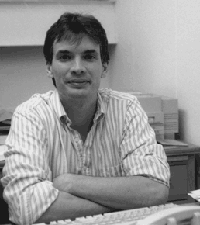Events
The Role of Intermolecular Coupling in the Photophysics of Disordered Organic Semiconductors
October 6, 2009 at 3pm/36-428
Frank Spano
Department of Chemistry, Temple University

abstract:
Electronic excitations in aggregates, thin films and crystals of conjugated organic molecules play a fundamental role in the operation of a wide array of organic-based devices including solar cells, transistors and light-emitting diodes. Optical excitations are generally delocalized excitons, the spatial extents of which are determined by the delocalizing influence of resonant intermolecular coupling and the localizing influence of static and dynamic disorder. Due to the “soft” nature of organic materials the electronic excitations are also accompanied by significant nuclear relaxation. In this talk we show how a theory based on the Holstein Hamiltoian represented in a multiparticle basis set can be used to understand absorption and emission in a range of organic materials including self-assembled carotenoid aggregates and poly(3-hexylthiophene) thin films. We discuss the mechanism whereby the vibronic progression based on the vinyl stretching mode is distorted away from the usual Poissonian distribution upon aggregation and show how the distortion can be analyzed to extract the exciton bandwidth, the exciton coherence length, and parameters describing the nature of disorder.
bio:
Frank Spano got his start at Middlesex County College where in 1980 he received an Associate in Science Degree. He then transferred to Lehigh University majoring in Physics, graduating in 1982 with a BS degree. However, the lure of Chemistry was too strong and in 1982 Spano entered the Graduate Program in Chemistry at Princeton University where he worked with Prof. Warren S. Warren on theory and experimentation in the area of Coherent Transient Spectoscopy. After obtaining a PhD in 1988, Spano went to the University of Rochester as a post doctoral associate with Prof. Shaul Mukamel working on the theory of condensed phase nonlinear optics. In 1990 Spano began his academic career at Temple University where he remains to this day.






